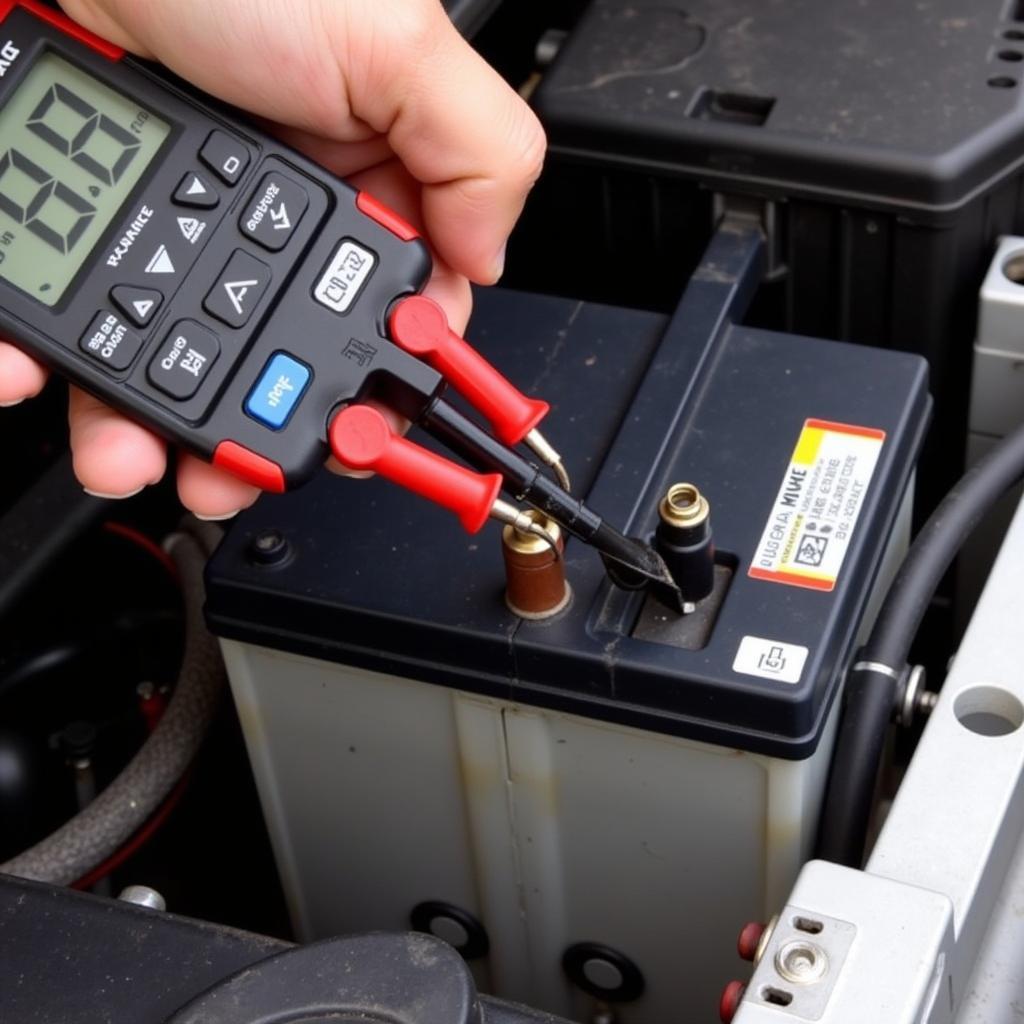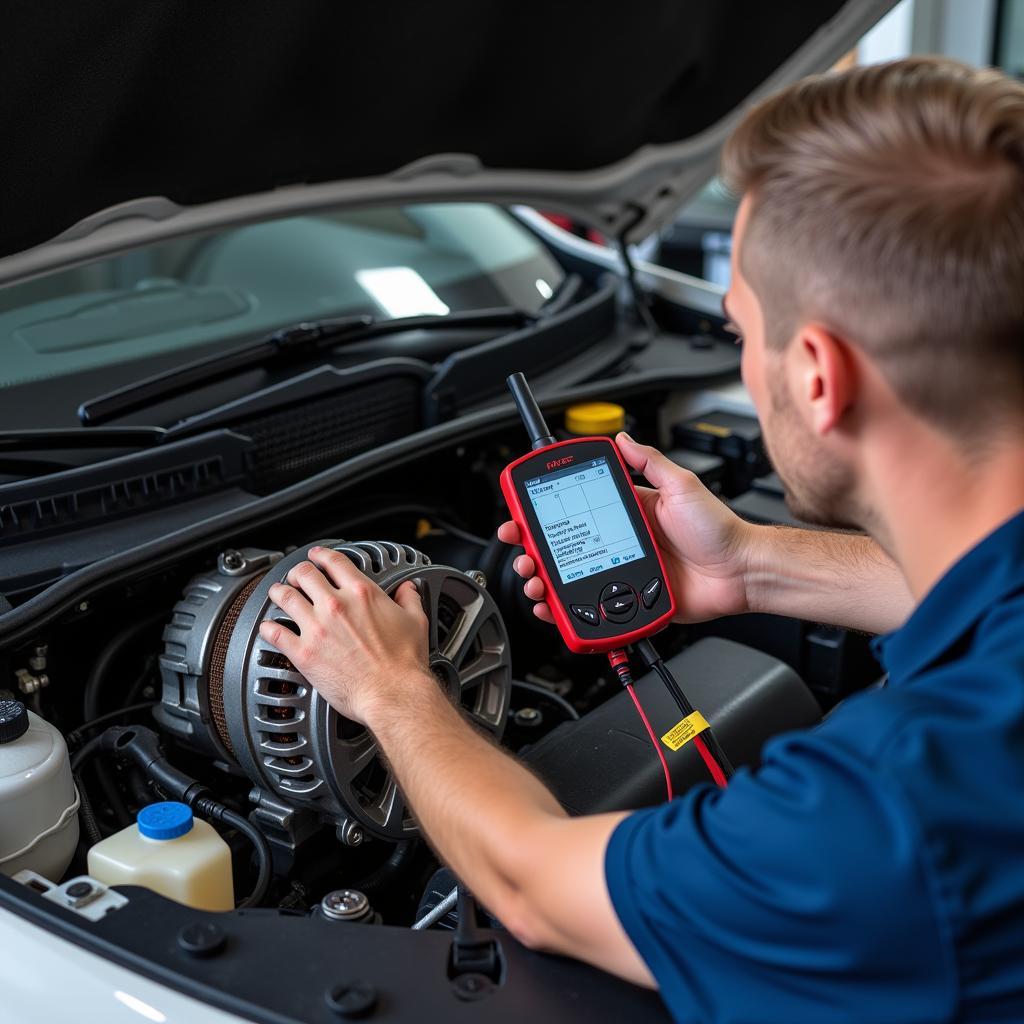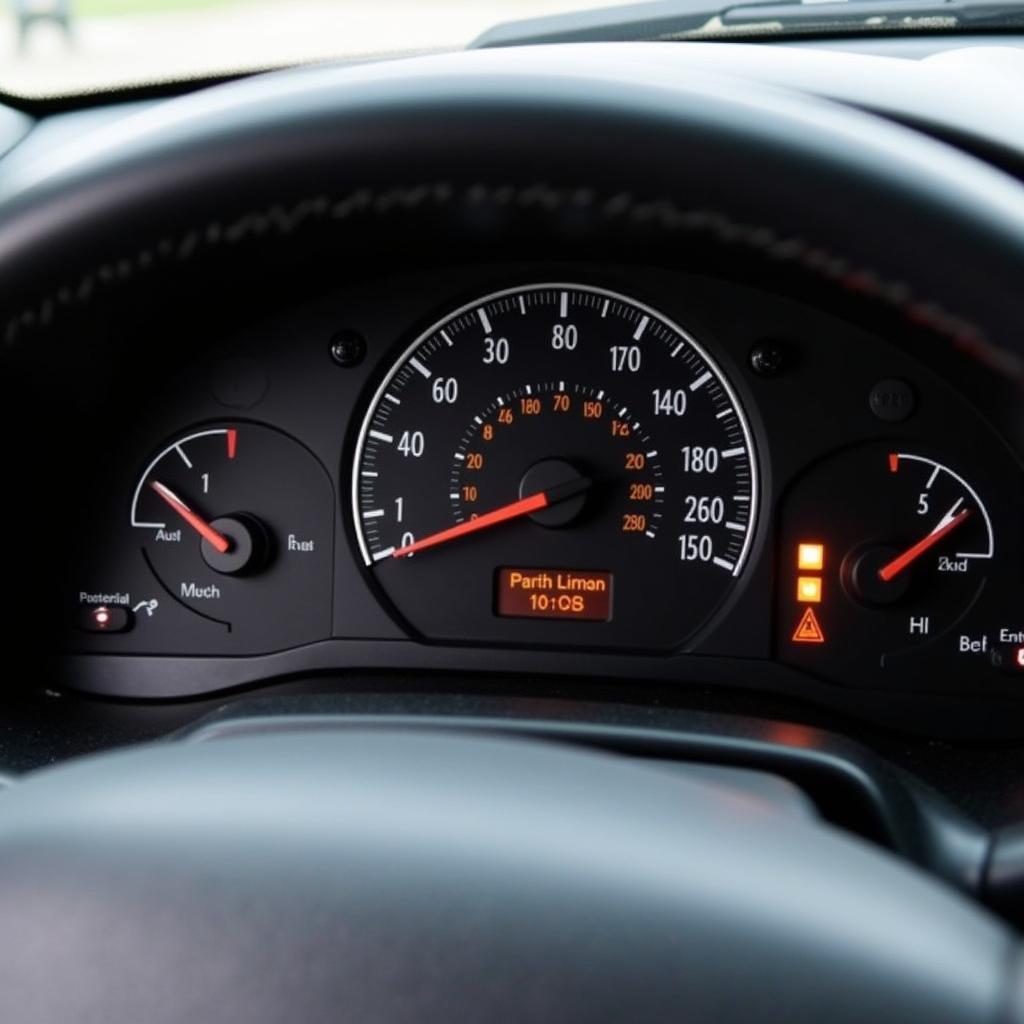A car battery completely flat is a frustrating situation, leaving you stranded and needing a quick solution. This article explores the common causes, provides troubleshooting steps, and offers solutions for dealing with a dead car battery. We’ll also discuss preventative measures and remote diagnostic options to get you back on the road.
Why is My Car Battery Completely Flat?
Several reasons can lead to a car battery completely flat. Some of the most common culprits include:
- Leaving lights or accessories on: A common mistake that drains the battery, especially interior lights, headlights, or even the radio.
- Extreme temperatures: Both extreme heat and cold can significantly impact battery performance and lifespan. Cold weather thickens the battery acid, reducing its ability to hold a charge. car battery drain in cold weather provides further information on this topic.
- Old age: Car batteries have a limited lifespan, typically 3-5 years. Over time, the battery’s ability to hold a charge diminishes.
- Parasitic drain: This occurs when a component in your car continues to draw power even when the vehicle is off, slowly draining the battery.
- Faulty alternator: The alternator recharges the battery while the engine is running. A malfunctioning alternator won’t charge the battery, eventually leading to a completely flat battery.
- Short circuits: A short circuit can quickly drain a battery, sometimes completely, and requires professional diagnosis and repair.
 Testing Car Battery Voltage with Multimeter
Testing Car Battery Voltage with Multimeter
How to Troubleshoot a Completely Flat Car Battery?
If you find your car battery completely flat, follow these troubleshooting steps:
- Check for obvious causes: Ensure no lights or accessories are left on.
- Try jump-starting: If jump-starting works, the battery may be nearing the end of its life or have a slow drain. See our article on car battery completely drained for more information.
- Test the battery voltage: Use a multimeter to check the battery’s voltage. A fully charged battery should read around 12.6 volts. A significantly lower reading indicates a problem.
“Testing the battery voltage is the first step in diagnosing a dead battery. It helps determine if the battery itself is the issue or if there’s another underlying problem,” says John Smith, Automotive Electrical Engineer at AutoTech Solutions.
Solutions for a Car Battery Completely Flat
Dealing with a car battery completely flat requires addressing the underlying cause. Here are some solutions:
- Jump-starting: A temporary solution to get your car running. However, the underlying issue needs to be addressed.
- Battery replacement: If the battery is old or damaged, replacement is often the best option.
- Alternator repair or replacement: If a faulty alternator is the culprit, it needs repair or replacement.
- Addressing parasitic drain: Identifying and fixing the component causing the parasitic drain is essential to prevent future battery issues.
 Mechanic Inspecting Car Alternator
Mechanic Inspecting Car Alternator
Preventing a Car Battery Completely Flat
Preventative measures can help you avoid the frustration of a dead battery:
- Regularly check the battery: Inspect the battery terminals for corrosion and clean them as needed.
- Turn off all lights and accessories: Double-check before leaving your vehicle.
- Limit short trips: Short trips don’t give the alternator enough time to fully recharge the battery.
- Consider a battery tender: A battery tender maintains the battery’s charge, especially during periods of infrequent use. Learn more about preventing battery drain in our article on prevent car battery from draining.
“Regular maintenance and preventative measures can significantly extend the life of your car battery and prevent unexpected breakdowns,” advises Sarah Jones, Senior Technician at Advanced Auto Diagnostics.
Conclusion
A car battery completely flat can be a significant inconvenience. Understanding the causes, troubleshooting steps, and solutions empowers you to address the issue effectively. By following the preventive measures outlined, you can minimize the risk of facing a dead battery in the future. If you suspect more complex electrical issues, consider remote diagnostic services to pinpoint the problem accurately.
FAQ
- How long does it take to jump-start a completely flat car battery? Typically, 5-10 minutes, but it can vary.
- Can I drive with a jump-started battery? Yes, but address the underlying issue promptly.
- How can I find a parasitic drain? A multimeter and systematic testing of circuits is required.
- How long do car batteries last? Typically 3-5 years, depending on usage and conditions.
- How often should I check my car battery? At least every few months, or more frequently in extreme weather conditions.
- What are the signs of a failing alternator? Dim headlights, flickering dashboard lights, and strange noises from the engine bay.
- Is it safe to jump-start a car with another car? Yes, if done correctly. Refer to your car’s manual for proper procedures. For instance, you may have warning lights related to the braking system such as described in subaru electronic parking brake warning light.



